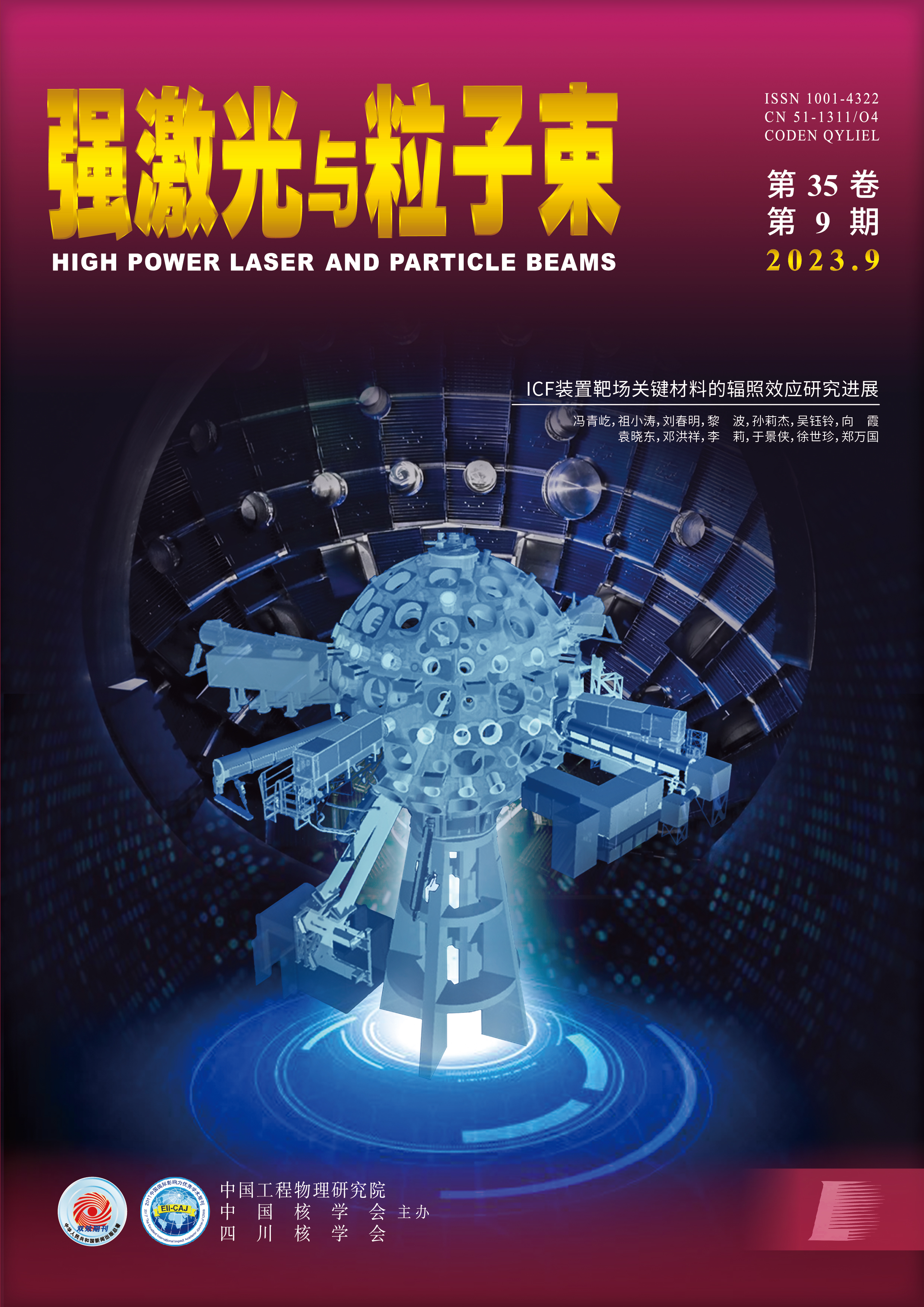2023 Vol. 35, No. 9
- Cover and Contents
- Laser Damage of Optical Elements
- High Power Laser Physics and Technology
- Operation and Maintenance of Large Scale Scientific Facility
- Inertial Confinement Fusion Physics and Technology
- High Power Microwave Technology
- Particle Beams and Accelerator Technology
- Pulsed Power Technology
- Nuclear Science and Engineering
- Advanced Interdisciplinary Science
The key materials near the target chamber suffer from radiation damage in the laser-driven inertial confinement fusion (ICF) facility, which limits the lifetime of materials and stable operation of ICF facility. This review summarizes the progress of...
Based on optical element’s high precision in-situ measurement requirements, this paper carries out the sensitive factor simulation analysis, studies the influence of systematic structural errors and temperature errors on the measurement results, and ...
At present, the operating temperature range of fiber lasers is generally narrow, and if the operating temperature range of lasers can be extended, they are expected to be applied in more environments and fields. Recently, the all-fiber oscillator sch...
High-power narrow linewidth fiber lasers have played an important role in the fields of coherent synthesis, spectral synthesis, and nonlinear frequency conversion, attracting extensive attention from domestic and foreign researchers. In recent years,...
This paper demonstrates that the single crystal optical parametric amplification process (OPA) satisfies spectral parity-time (PT) anti-symmetry under specific boundary conditions, and the PT symmetry threshold point exhibits a gain jump property. Fo...
Photo-transmutation is an important path to handle long-lived fission products. In this research work, an optimization scheme of photo-transmutation induced by Laser WakeField Acceleration (LWFA) driven electrons is proposed. Numerical simulations of...
To improve the calibration accuracy of X-ray detectors, this paper presents a method of placing filters in fluorescent X-ray emission channels to improve the purity of X-rays. Monte Carlo simulation model was established to analyze the relationship b...
Two 808 nm semiconductor lasers were combined by V-shaped spectral beam combining and locked at 795.8 nm and 800.5 nm respectively. The output power and beam quality in the slow axis were improved significantly. The sum frequency of semiconductor las...
One of the main problems occur during inertial confinement fusion (ICF) laser facility’s long-term operation is the gain degeneration of the 400 mm aperture slab amplifier,which will affect the output of the facility and the laser beam quality. A stu...
Aiming at the assembly scheduling problem of optical and mechanical modules for large laser devices, a scheduling priority rule acquisition method based on artificial neural networks (ANNs) is proposed. In the offline phase, this method optimizes the...
In the study of indirectly driven laser fusion, the flat response X-ray diode is the main detector for the measurement of X-ray radiation energy flux. To obtain ideal flat response effect, it usually costs a lot of time to optimize the composite filt...
For compact high-power microwave devices operating at low magnetic field, a compact S-band relativistic magnetron operating at low magnetic field was designed and simulated with three-dimensional particle-in-cell codes. This tube radiates TE11 mode i...
The theory, method, and experimental studies on mode-locked free-electron laser (FEL) have been of great interests in the world. In this paper, we propose a method to generate mode-locked multi-color free-electron laser radiation pulses based on the ...
To efficiently adjust the output beam energy of the Hefei Light Source II (HLS-II) linac, this study presents a beam energy adjustment scheme. During the debugging stage, the beam bunch state is observed, and the beam energy is measured using an ener...
To realize the miniaturization and lightweight design of Tesla transformer with high output voltage, the relationship between the surface flashover characteristics of support insulators and the surface electric field in a 0.5 MPa SF6 gas environment ...
Multiple D-dot voltage probes were designed and calibrated to measure the voltage of a 4 MV induction voltage adder. The frequency response test results indicate that the upper limit of the probe frequency is greater than 270 MHz, which meets the fre...
The wire wrap on the surface of the fuel rods of the sodium cooled fast reactor can strengthen the transverse flow of the coolant between the channels, reduce the unevenness of the temperature distribution in the assembly box, and improve the safety ...
This work proposes a two-electron resonance absorption (TERA) model, which explains the reason for laser-induced single event upset (SEU): when the energy of a single photon is not enough to excite the electron-hole pair, there will be de-excitation ...
A composite device of intelligent multifunctional laser protection goggles and automatic detection and alarm is designed and developed, which is mainly used for protection and early warning of human eye damage caused by laser radiation. The protectio...
Due to the less information of distant target, it is always challenging to accurately track the target in the task of infrared dim small target tracking. To improve the accuracy, based on correlation filtering framework, the side window filtering met...
To solve the heat dissipation problem of high heat flux density solid-state laser, a set of micro-compact embedded manifold S-shaped microchannel heat sink was developed using the MEMS technology and the microchannel/heat source co-design method. The...
In a complex electromagnetic environment, magnetic field interference is one of the main reasons for the error of fiber optic gyroscopes. To reduce the influence of the magnetic field generated by the heating plate in the body of the fiber optic gyro...




 Email alert
Email alert RSS
RSS

